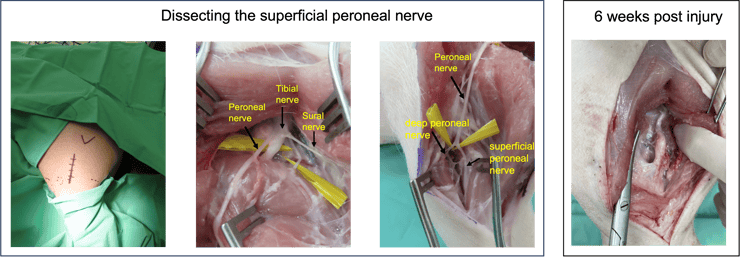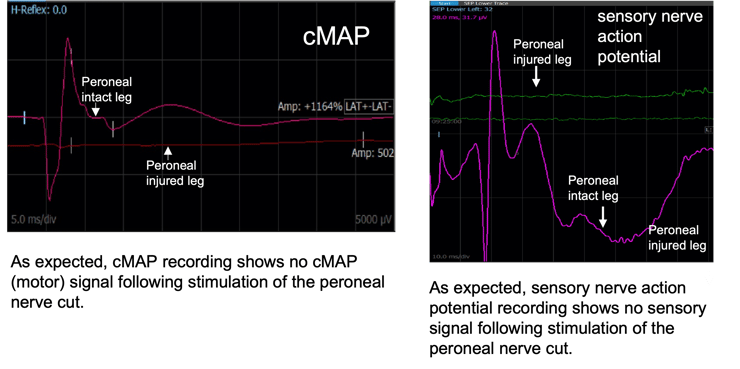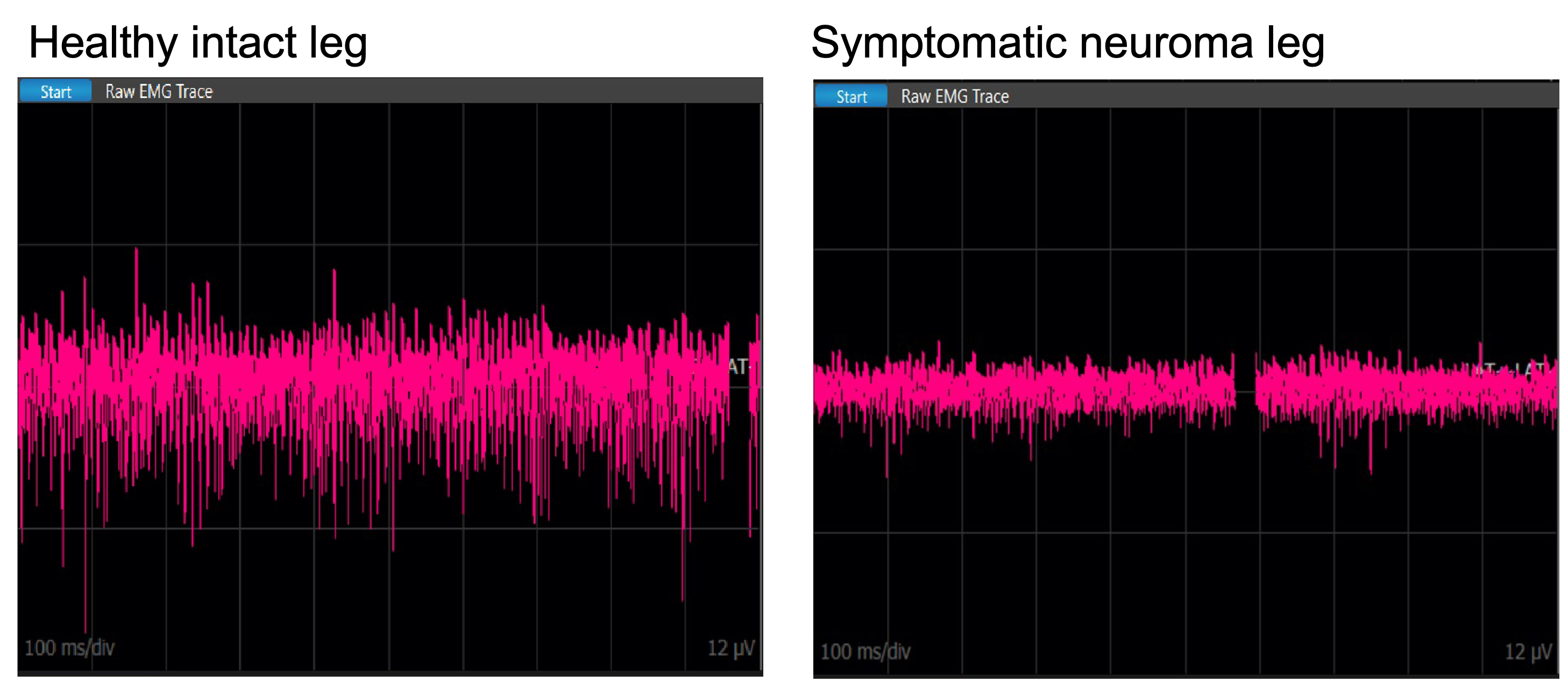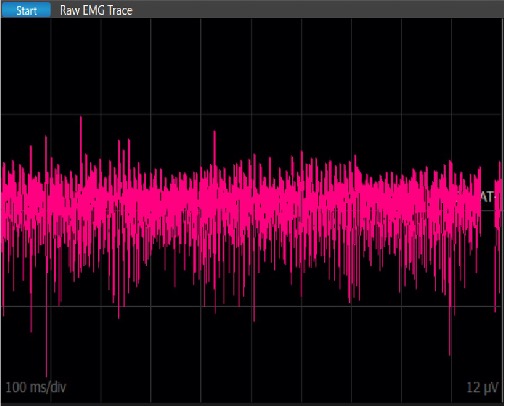Neuroma in humans is a challenging condition that often leads to persistent pain in residual limbs. Despite its prevalence, this condition proves to be unresponsive to medication and difficult to effectively treat. Neuroma occurs when a nerve is partially or fully damaged by injury caused by a cut, crush or stretch. It is a ball-shaped mass at the site of the injury, which can be painful or cause a tingling sensation if taped or if pressure is applied. The neuroma can be extremely debilitating, preventing the use of prosthetics, reducing quality of life, and requiring medication. It is estimated that 1.6 million people in the United States live with major extremity loss, and about 1.3 million of these patients suffer from chronic pain.1 Furthermore, 65-81% of patients report pain that continues beyond the post-surgical healing period. New therapeutic advancements and methods are needed to address painful neuroma.1
Preclinical studies of peripheral nerve injury focus on injury to the sciatic nerve, such as spinal nerve ligation or chronic constriction injury. The sciatic nerve injury model refers to injury (cut or ligation) of two branches, the tibial nerve and the common peroneal nerve, while the sural nerve remains intact. While all these models are useful for the study of neuropathic pain, they do not accurately mimic the distal surface symptomatic neuroma. These models are also limited to rodents, which restricts research to pharmacology. The development of a large animal model for neuroma in the pig opens the opportunity for development of device technology and surgical-related concepts.
MD Biosciences is proud to announce the initiation of a new program to develop a clinically-relevant symptomatic neuroma model in the pig. This effort is supported by the innovation authorities in Israel, and is a joint effort between physicians, neuroscientists, pain scientists, biomarker scientists and expert veterinarians.
Development of Symptomatic Neuroma Model in Swine

Electrophysiology Characterization of the Neuroma
First time cMAP and sensory action potential measurements in swine 6 weeks post neuroma.

Spontaneous Firing from the Sciatic Notch

Increase in frequency (on the right) and amplitude of spontaneous firing following neuroma of the peroneal nerve.
References:
- Svientek, S, Kemp, S, Cederna, P, et al. The clinical significance of a swollen neuroma: a meaningful distinction or an incidental finding?






